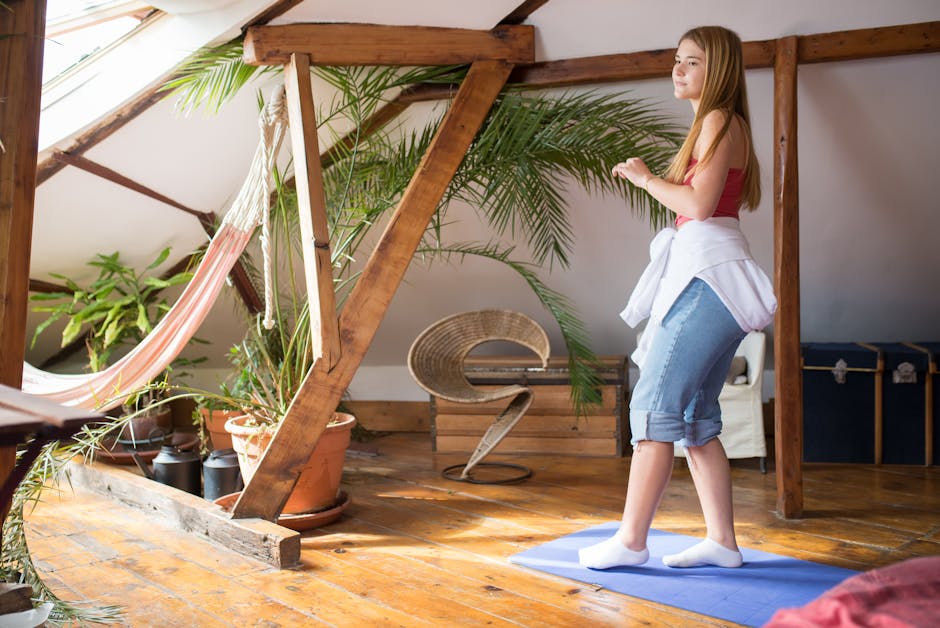Creating a Wellness Space at Home: Your Guide to a Tranquil Oasis
In today’s fast-paced world, finding tranquility and peace within the confines of our own homes has become increasingly important. Creating a wellness space at home is not just a luxury; it’s a necessity for mental and physical well-being. This guide will walk you through the essential steps and tips to design a sanctuary that promotes relaxation, mindfulness, and rejuvenation.
Why a Wellness Space Matters
According to a study by the American Psychological Association, 77% of Americans regularly experience physical symptoms caused by stress, highlighting the need for personal sanctuaries. A designated wellness space can act as a buffer against stress, providing a retreat for mental clarity and emotional balance.
Benefits of a Home Wellness Space
The advantages of having a dedicated wellness area are profound. It encourages regular self-care practices, enhances focus and productivity, and promotes better sleep. More importantly, it provides a physical reminder to pause and prioritize your well-being.
Choosing the Right Location
Before diving into design, selecting the right location for your wellness space is crucial. Whether it’s a corner of your bedroom, a spare room, or a section of your living room, the key is to find a spot that feels comfortable and inviting.
Considerations for Location
When picking a location, consider factors like natural light, privacy, and noise levels. A study by Harvard Health found that exposure to natural light can improve mood and energy levels, making it an important element in your wellness space.
Designing Your Wellness Space
Once you’ve chosen the perfect spot, it’s time to design a space that reflects your personal style and meets your wellness needs. Here are some tips to get you started:
Color Psychology
Colors have a significant impact on our emotions and mental state. Opt for soothing hues like soft blues, greens, and earth tones to create a calming environment. According to Color Psychology, these shades are known to reduce stress and promote relaxation.
Essential Elements
Incorporate elements like comfortable seating, soft lighting, and calming scents. Aromatherapy using essential oils such as lavender and eucalyptus can enhance relaxation and improve mood.
Incorporating Nature
Bringing elements of nature indoors is a proven way to enhance well-being. Houseplants not only purify the air but also add a touch of serenity. Studies show that interacting with plants can reduce stress levels and improve concentration.
Personalizing Your Space
Your wellness space should be a reflection of your personal tastes and wellness goals. Here are some ideas to personalize it:
Mindfulness and Meditation
If mindfulness is your focus, consider adding a meditation cushion or a yoga mat. A small altar with meaningful objects can also provide a focal point for meditation practices.
Creative Expression
For those who find wellness in creativity, incorporate a small easel or a writing desk. Keep art supplies or journals readily available to inspire spontaneous creativity.
Maintaining Your Wellness Space
Creating a wellness space is only the first step. Maintaining it is essential to ensure it continues to serve your well-being needs.
Regular Decluttering
Regularly declutter your wellness space to keep it inviting and functional. A clutter-free environment is crucial for reducing stress and increasing focus.
Routine Refresh
Periodically refresh your space with new elements like seasonal decor or updated artwork. This keeps the area inspiring and prevents it from becoming stagnant.
Conclusion
Creating a wellness space at home is a powerful way to prioritize your mental and physical health. By carefully choosing the location, designing with intention, and personalizing the area, you can cultivate a sanctuary that nurtures your well-being. Remember, the key is to create a space that resonates with you and evolves as your wellness needs change. Start small, stay consistent, and watch as your home transforms into a haven of peace and tranquility.
For more tips on creating a wellness space, check out our comprehensive guide or explore our blog for additional resources.
Share this content:
About The Author
Discover more from J and J Fitness
Subscribe to get the latest posts sent to your email.




